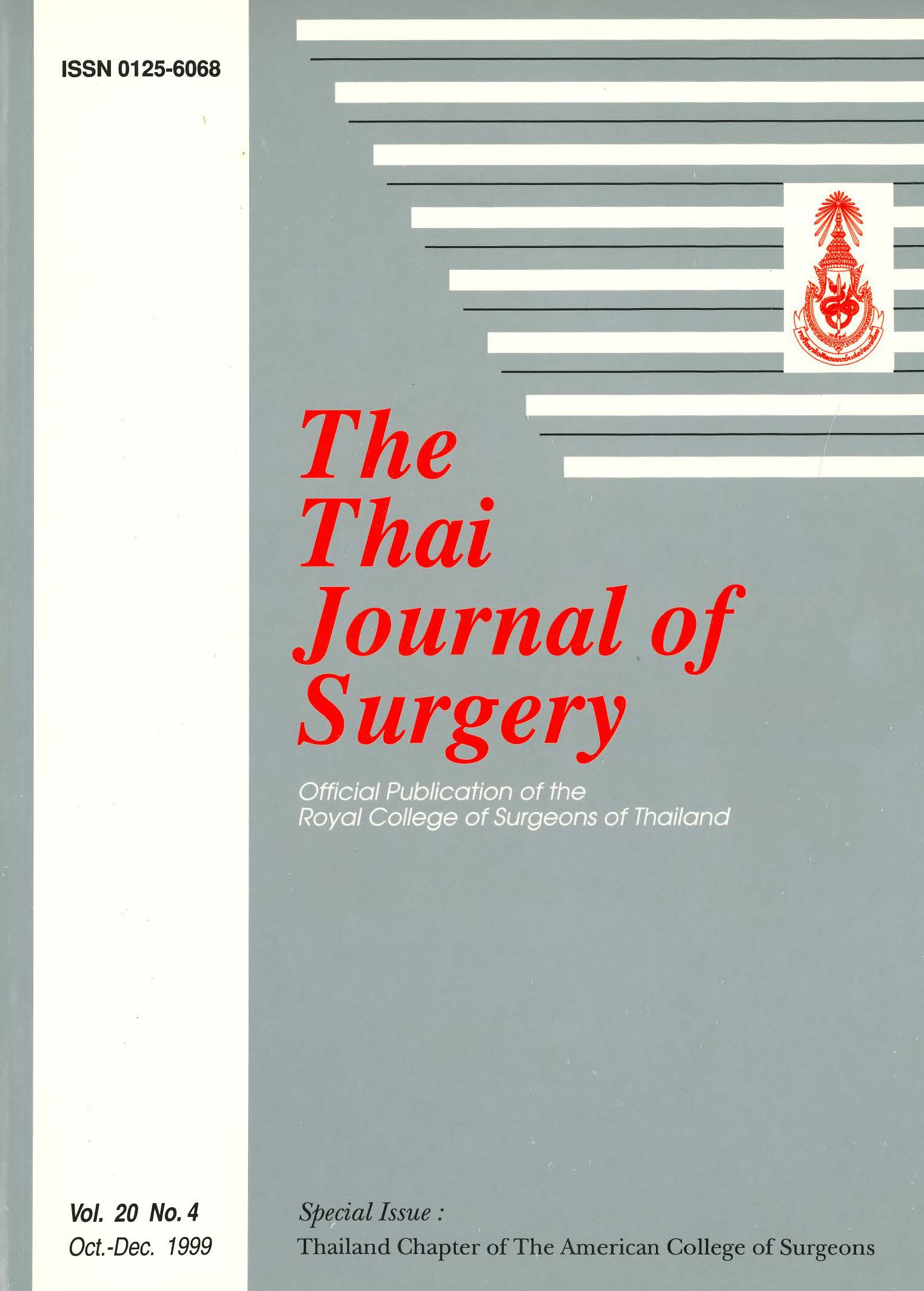Mitral Value Repair with Autologous Pericardial Ring: An Early Result
Abstract
Mitral valve annuloplasty has an important role for a long-term stability of mitral valve repair. Several techniques have been used for this purpose. In this study, we would like to review our result of using autologous pericardial ring for posterior annuloplasty in mitral valve repair.
Between October 1997 and August 1998, a total of 39 patients underwent mitral valve repair using autologous pericardial ring for posterior annuloplasty at Central Chest Hospital. There were 26 males and 13 females. Their ages ranged from 17 to 71 years old with a mean age of 44.3 years. Follow-ups ranged from 1-11 months with a mean of 5.1 months. The majority of them were caused by rheumatic disease (19). Other causes included degenerative disease (11), infective endocarditis (3), ischemic heart disease (4) and congenital disease (2). Isolated mitral valve repair was done on 20 patients, one as a redo-mitral valve repair. Other associated operations were aortic valve replacement with autologous pericardium (4), aortic valve replacement (2), aortic valve repair (2), aortic valve replacement with pulmonary autograft (1 ), tricuspid valve repair (5), coronary artery bypass grafting (4), and closure of ventricular septal defects (1). The most commonly used surgical procedures were posterior annuloplasty, resection of secondary chordae, and suture annuloplasty. The average mitral valve repair procedures per patient in this study were 4.43. There was one hospital mortality due to acute respiratory tract problem. There was no thromboembolic complication or reoperation. The functional status as well as the degree of mitral regurgitation improved substantially after the operation. In conclusion, the use of autologous pericardial ring for posterior annuloplasty can be done safely as an alternative technique for mitral valve annuloplasty. Long term follow-up is mandatory to assess the safety and durability of the technique.
References
2. Deloche A, Jebara V, Relland J, et al. Valve repair with Carpentier techniques: The second decades. J Thorac Cardiovasc Surg 1990; 99:990-1002.
3. David TE, Armstrong S, Sun Z, et al. Late results of mitral valve repair for mitral regurgitation due to degenerative disease. Ann Thorac Surg 1993; 56:7-14.
4. Yacoub M, Halim M, Radley-Smith R, et al. Surgical treatment of mitral regurgitation caused by floppy valves: Repair versus replacement. Circulation 1981: 64 (suppl l):210-6.'
5. Duran CMG. Conservative surgery of the mitral valve. Ring annuloplasties. In: lonescu MI, Cohn LH, ed. Mitral Valve Disease. Butterworths: London, 1985:179-88.
6. Cosgrove DM 3rd, Arcidi JM, Rodriguez L, et al. Initial experience with the Cosgrove-Edwards annuloplasty system. Ann Thorac Surg 1995; 60(3):499-503.
7. Komoda T, Hetzer R, Uyama C, et al, Mitral annular function assessed by 3D Imaging for mitral valve surgery. J Heart Valve Dis 1994; 3:483-90.
8. David TE, Komeda M, Pollick C, et al. Mitral valve annuloplasty: the effect of the type of left ventricular function. Ann Thorac Surg 1993; 56:7-14.
9. Scofani R, Moriggia S, Salati M, et al. Mitral valve remodling: Long term results with posterior pericardial annuloplasty. Ann Thorac Surg 1996; 61 (3):895-9.
Downloads
Published
How to Cite
Issue
Section
License
Articles must be contributed solely to The Thai Journal of Surgery and when published become the property of the Royal College of Surgeons of Thailand. The Royal College of Surgeons of Thailand reserves copyright on all published materials and such materials may not be reproduced in any form without the written permission.



